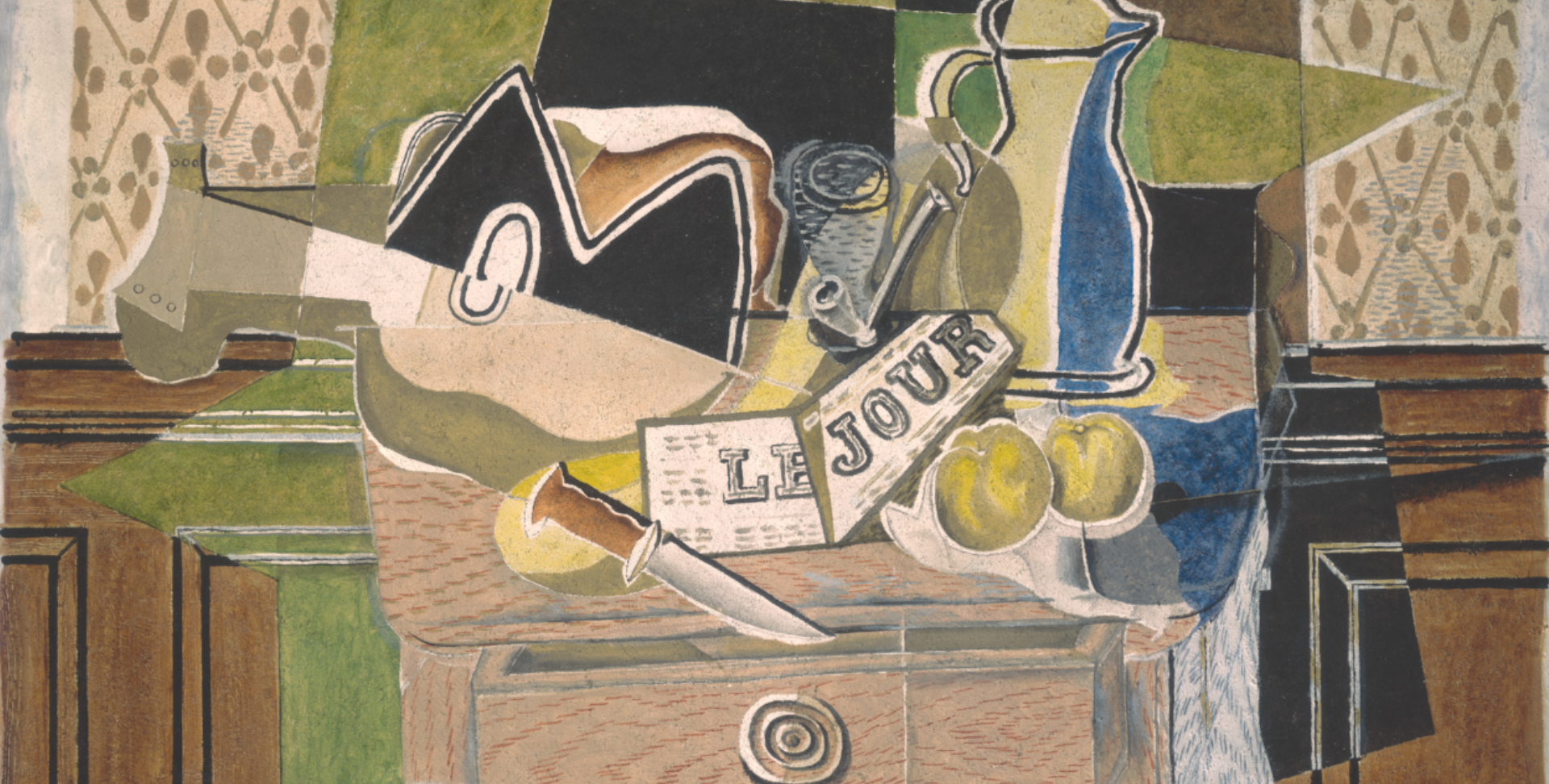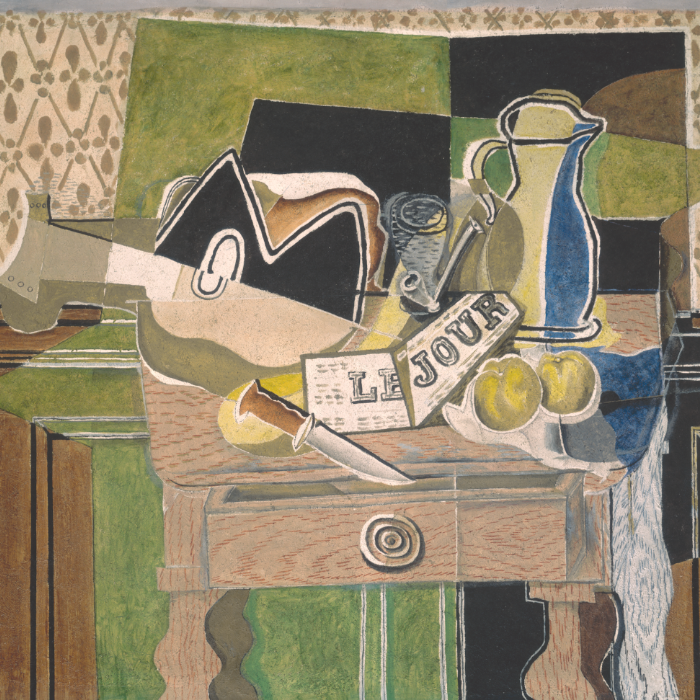



In 1914 the direction of art and art history was changed for ever. This sounds dramatic, but it’s true. Why? Because a rebellious French artist called Marcel Duchamp started to put ordinary objects into a gallery and call them art.
Duchamp said that by simply choosing the object, putting it into a new context – in this case a gallery – and saying it was art made the object become a work of art.
Duchamp called these objects readymades – manufactured objects, already made or modified, like a bicycle wheel or a bottle rack. Sometimes they were left exactly as they were, or sometimes changed in some way. Today, his most famous readymade is Fountain, a urinal which he placed upside down on a pedestal and signed with a fake name.

Marcel Duchamp made the first “readymade” which asked the question “what is art?”.
Duchamp’s actions flew in the face of tradition in completely new ways, but he wasn’t alone. He was part of a group called Dada, founded by writer Hugo Ball in Zurich in 1915, whose influence soon spread to Berlin, New York and Paris.
It was Dada’s raison d’être (“reason for being”) to be provocative and “anti-art”, to outrage and offend. The Dadaists rejected art as something unique, beautiful, or skillfully made, and replaced it with commonplace objects, political poetry, and absurd acts of chance. Dada attracted artists, writers, performers, and musicians who were anarchic and angry at the senseless horrors of the First World War.
The name Dada comes from a French word for a “hobby horse”. It was a word plucked at random from a dictionary and was meant to be nonsensical.
Ever since this moment, the door has been open for pretty much anything to be used by artists to create work, paving the way for Surrealism, Pop Art and Conceptual Art.

The Dada movement challenged traditional values and opened the floodgates to a world where artists could make art out of anything.
Let’s pause for a second and consider the concept of found objects, also referred to using the French equivalent, objets trouvés. This is when artists make artworks with objects they find around them, especially those that aren’t usually seen as something to make art with.
In most cases the object is found, but sometimes it has been bought. It can be natural or humanmade, incorporated into artworks exactly as it is, or modified in some way. An artist might choose an object for its shape or material, or because it seems to tell a story.
And as we know from Marcel Duchamp, when the object chosen is manufactured, it is called a readymade.
When different found objects are arranged together, this is called an assemblage, as in Nam June Paik’s arrangement of irons in Flux Feet (1974). Perhaps unsurprisingly, it was the ever-inventive Cubist artists, Pablo Picasso and Georges Braque, who first used found objects, when they started to include wallpaper and old newspapers in Cubist collages in 1912.

When artists use natural or manufactured objects in their artworks, which might be left as they are, or modified in some way, this is called a “found object”.
Surrealism was a close descendant of Dadaism, with its taste for the uncanny and absurd, and a strong desire to shock the Art Establishment (the mainstream of ideas around art formed by the major art institutions and art dealers). It started life in 1920s Paris as a literary movement sparked by French poet André Breton who wrote the first Surrealist manifesto – La Révolution surréaliste – in 1924.
Because it was highly influenced by the theories of the founder of psychoanalysis, Sigmund Freud, Surrealism went beyond the disruptive tendencies of the Dada movement, digging into the realms of psychology and the unconscious mind. As well as influencing film, photography, literature and painting, Surrealism took found objects to a whole new level by combining them in disturbing and humorous ways.
Take, for example, the bizarre joining of objects in Dali’s Lobster Telephone, Meret Oppenheim’s teacup lined with gazelle hair, or Dorothea Tanning’s mutated roses. They’re like bad dream. Anyone fancy a cuppa and a chat?

Surrealist artists brought together bizarre combinations of found objects so that the finished piece was uncanny, disturbing, funny, or dreamlike.
While it’s not the case that all roads in modern and contemporary art lead back to Marcel Duchamp, it’s certainly a well-trodden path. He is often referred to as “the forefather of conceptual art”, and for good reason. Conceptual art is when the idea behind a work of art is as important as the actual finished piece. It grew as a movement in the 1960s and 1970s, in Europe, and North and South America, but has as its roots firmly planted in 1917, with Duchamp’s Fountain.
What does conceptual art look like if it is the thought process that counts? Well, it could be anything – a performance, a film, a photograph, or an installation – and often took the form of found objects.
For example, take the work of Damien Hirst, who is perhaps most famous for placing animals in tanks of formaldehyde such as sharks, sheep, and cows. It’s like a contemporary version of a memento mori. Or Tracey Emin’s bed, the same bed she spent four days in while depressed and distraught, drinking and smoking after a bad break up. She famously said, “Art is not for looking at, art is for feeling”.

When the idea, or concept, of a work of art is as important as the work itself, it is called conceptual art. Marcel Duchamp’s readymades paved the way for this kind of art.
Before we round off this chapter, let’s think about some of those less dramatic artworks which sit within the world of the found object – the overlooked or seemingly mundane. The idea of the chance encounter came from Surrealism, celebrating the bringing together of unlikely objects and materials.
Many artists take found and forgotten objects and invite us to look at them more closely. Some prompt us to imagine an object’s story, like Cornelia Parker’s The Spider That Died in the Tower of London, while others raise questions about how we are treating the planet, like Simryn Gill’s photograph of rubbish washed up by the tide.
Chance encounter – an idea that came from Surrealism and celebrated the bringing together of unlikely objects and materials.

Many artists encourage us to look more closely at forgotten or overlooked, everyday objects.

"*" indicates required fields